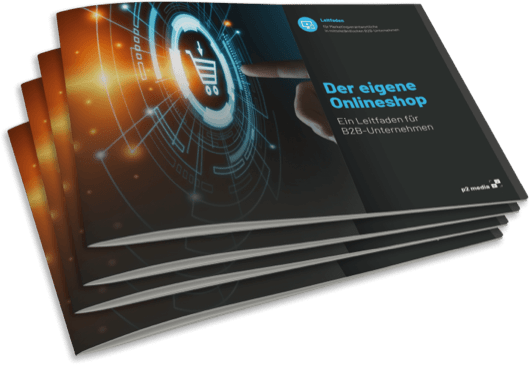The web-centricity of everyday life is constantly increasing in all areas of life. Nowadays, when a problem or need is identified - whether in a private or business environment - the potential customer goes online in the first instance to search for specific solutions. This prerequisite and the behaviour of the (potential) customer with regard to his decision cycle must be taken into account centrally in modern online marketing. Only in this way can corresponding measures proceed efficiently and at the same time provide maximum success in customer acquisition or customer retention.
No Customer Journey without Buyer Personas
As already indicated at the beginning - and as the term "customer journey" makes it easy to recognize - the customer journey and the respective target group, i.e. the potential customers, are closely connected. Before looking at the customer journey, it is important to know who is going through the associated decision cycle and what they (or personas) want to achieve. Marketers need to be aware that customers typically purchase products or services that maximize their ability to solve a problem or need that is relevant to their context. Consequently, relevant challenges or desires are at the center of the target group analysis. The buyer personas approach combines these factors with socio-demographic and psychological characteristics and other data in profiles of fictitious typical customers. In contrast to the classic list of target groups, potential customers are depicted much more tangibly and realistically as buyer personas, which means that marketing can be geared to them much more efficiently.
What is the Customer Journey
The Customer Journey, sometimes also referred to as the Buyers Journey or Users Journey, is a methodical model or process instrument that can be used to map each individual stage that potential customers and existing customers go through when (possibly) purchasing a product or service.
As a rule, there is a typical decision cycle. This is marked at the base by different phases. The latter extend from the recognition of a problem or need to the research of relevant solutions to the purchase decision and use of the purchased service. In the process, all touchpoints of the (possible) customer with a company or the relevant brand and/or the respective services sold are recorded. The data obtained is one of the most important foundations for contemporary economic online marketing.
If the information is transferred in a differentiated manner to the marketing phases of the customer journey, there is a significantly increased chance of winning customers and retaining them in the long term. If, on the other hand, the customer journey is not sufficiently anchored in marketing, there will probably be deficits at various points (touchpoints), which will have a negative impact on the satisfaction of customers in the buying process, causing them to look elsewhere.
The customer journey and the associated decision-making process can vary greatly in terms of time depending on the business focus - on end customers or B2B customers. In the B2C area, purchase decisions are often made within minutes - in the B2B area, however, corresponding processes can take weeks or months. The number of touchpoints also varies. If the sales focus is on end customers, there are sometimes only a few touchpoints, whereas in B2B there are usually significantly more touchpoints. Consideration of the customer journey is crucial to success in both areas, but in B2B it is particularly important to take a small-scale approach due to the circumstances mentioned.
Every now and then, the customer journey is equated with the customer experience. Although there is in fact a strong connection here, they are different considerations. The customer journey refers specifically to the lead process up to the purchase decision as well as to the final purchase -related consequences. The customer experience describes the customer experience in its entirety. Among other things, it also includes impressions left by general advertising and conveyed corporate values.
For a maximally efficient transfer of such processes to their own online marketing activities, companies must empathize with the decision-making process and the exact decision cycle of their customers. In many contexts, this can be ensured in a particularly beneficial way by taking the AIDA model into account. AIDA is an acronym that stands for the terms "Attention", "Interest", "Desire" and "Action". These terms describe the individual phases of the customer journey. In the Attention phase, the potential customer becomes aware of a problem or need and the first step of general information research takes place, usually via the Google search engine or via social media channels, and their Customer Journey begins. Obtained data is then looked at in more detail and expanded in the Interest phase. The most suitable solutions in each case become more concrete. In the Desire phase, the direction in which the chewing decision will lead is already largely determined. The appropriate provider is determined through precise comparisons. The action phase includes contacting the preferred provider (tochpoint), reviewing the offer and closing the deal, and thus represents the end of the customer journey.
Our support around the topic Customer Journey:
- Together with you, we create relevant customer profiles and derive a professional customer journey.
- We determine relevant channels and design an individual customer journey map specifically for your company.
- Based on this, we outline a positiveuser experience along all relevant touchpoints and implement it programmatically.
- In addition, we are happy to support you in the strategic alignment of lead nurturing with the defined customer journey and develop concrete content modules for the respective phases of the buying process.
For holistic and successful online marketing, we are also happy to take care of the following topics:
Oliver Parrizas will be happy to answer any questions you may have on the subject. +49-800-911-91-91











